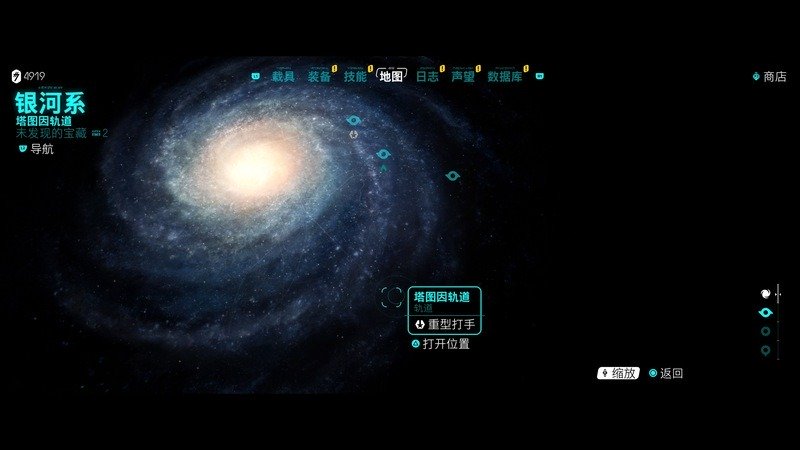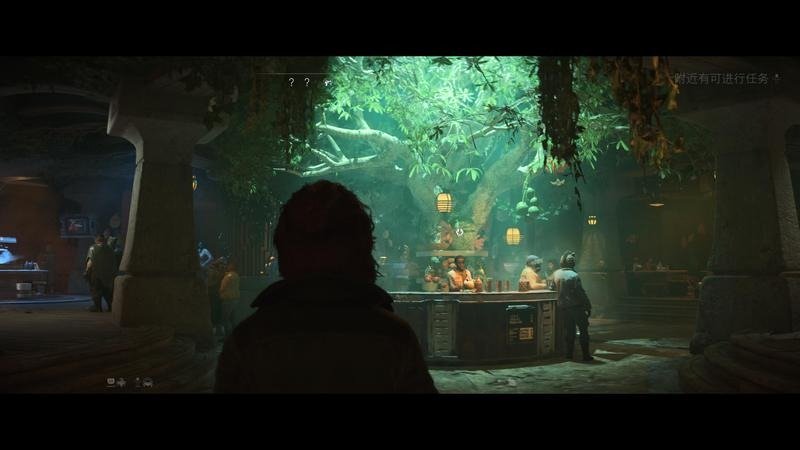Frostpunk 2 Review: Bold Innovations in City-Building Strategy
516
2024 / 09 / 22
Star Wars Outlaws has been out for more than ten days, and I've seen the reviews from both media and players. But as a Star Wars fan, I wouldn't be satisfied without trying it for myself. Because of that, I now have my own answer to whether the Ubisoft + Star Wars IP combination is worth recommending.

The timeline of Star Wars Outlaws is set during the Galactic Empire's reign, right before "The Empire Strikes Back." It’s essentially a spin-off seen from the perspective of the female protagonist, Kay Vess. The content and script length of the game are substantial, making it worth viewing as a spin-off for Star Wars fans. After being thoroughly disgusted by The Waiter, I found Star Wars Outlaws somewhat healing during my playtime.
Simply put, it’s a political drama involving four major crime syndicates and the Empire, set within Ubisoft's signature "grand platter" gameplay. Regardless of how the latter is executed, Star Wars fans can slowly enjoy the game, as it faithfully adheres to the original source material. Particularly when you're riding a speeder bike across the open world of various planets, you can feel that Massive Entertainment put effort into world-building.
However, for non-fans, without these bonuses, the game’s rough and unbalanced gameplay becomes glaring, so those interested should be cautious.

Since it’s Star Wars, gunfights and space jumps/chase scenes are obviously a must. The game also faithfully recreates the landscapes of planets like Cantonica, Tatooine, Kijimi, and Akiva, all with distinct environments. For example, the Cantonica planet has an open world filled with exploration elements, and it embeds a medium-sized Cantonica city map within it. When you leave the planet in a spaceship, you'll enter a small open world map of outer space before jumping between different star systems.



Kay Vess is crafted very much like Han Solo, venturing into the galaxy with a blaster and a silver tongue. However, the entire galaxy in the game is ruled by eight factions, particularly the four major crime syndicates and the Empire. The tasks Kay takes on will affect the favorability among these factions, ranging from determining whether certain equipment or faction maps are open to you, to influencing the fates of certain NPCs.

While this may sound like a nonlinear story, it isn’t. The decisions you make barely impact the outcome. The rise and fall of faction favorability are also simplistic—sometimes even dumb. One minute I’m wiping out a Crimson Dawn outpost, and the next, a choice I make on another planet raises our favorability. Furthermore, Ubisoft has stretched the quest chain long enough that by the time I’ve done all the prerequisite tasks for quest A, I’ve forgotten what quest A was even about.
That being said, the game’s cutscenes are fairly abundant, even in side quests, which feature lots of dialogue and voice acting. Regarding atmosphere, NPCs in towns each follow their own scripts, and I’ve inadvertently observed wildlife in the open world. These are definite pluses. However, I’m reviewing the PS5 version, and the graphics and frame rate are a bit underwhelming. For those who want to immerse themselves in the atmosphere, the PC version might be a better choice.



The core gameplay consists of stealth, gunfights, lockpicking/hacking, mini-games, skills + equipment + ship upgrades, spaceship chases, and open-world exploration. Let's take them one by one.
First, stealth takes up the majority of your playtime, and I think it’s where the gameplay feels rough and unbalanced. Ubisoft is usually good at stealth mechanics, and by design, many segments prohibit Kay from simply shooting her way through. Instead, players are encouraged to use her "pet" companion, Nix, for remote operations like distracting enemies, picking up items, or turning off alarms from a distance.
However, the AI of the enemies is clearly problematic. The alert zones and patrol routes feel off in difficulty. For instance, you can sneak past enemies for an easy assassination, but if you crawl through a distant gap between boxes, they’ll suddenly notice you. After checking suspicious spots, the AI often takes bizarre detours, not in a "maybe he's hiding nearby" kind of way, but in odd, roundabout paths.


Another frustration is that while there are multiple stealth routes, there are also plenty of “traps,” like getting detected the moment you climb a ladder or land after exiting a ventilation duct, leading to frustrating resets.
Melee combat animations are sparse, with only two or three repetitive moves. Sometimes enemies will float towards you and get knocked down by a single punch, but that’s minor. Kay only has one blaster, which can be upgraded, and it has plasma, ion, and energy modes for different enemy types. Even so, it’s hard to win firefights by relying on cover shooting or melee after triggering alarms. The game encourages more stealth, and when that fails, you’ll need to pick up enemy weapons. However, enemy weapons have ammo limits, and after a few shots, you’ll have to toss them. From start to finish, combat is consistently like this, which doesn’t satisfy those who crave intense action.

Lockpicking is a rhythm game where you match the lock's sound intervals by pressing buttons in rhythm, and hacking involves finding the correct symbols in a sequence. There's plenty of trial and error, and you can eliminate wrong answers. Upgrading subroutines can speed up the hacking process. While not particularly innovative, it’s stress-free and not overly repetitive, which is a plus.

Sabaac cards and horse betting are available in nearly every star system. One of the reasons I kept playing was to admire the Star Wars details and, honestly, to play cards. I don’t know the rules of Sabaac in Star Wars, but the in-game version is pretty fun. It’s basically about pairing cards, with added feature cards that introduce a psychological element. Early matches are too easy, but later ones become more intense than storming an Imperial outpost with a small pistol. I look forward to the day I can play this against real people.

Horse betting and racing mini-games are simple, especially since they’re always located near Sabaac tables, so I barely pay attention to them.

In the open world, there are many undiscovered "question marks" on the planet’s big maps. I won’t go into detail on this. Some missions require you to travel to outer space regions, where the question marks are fewer but the areas are vast, and you might trigger chase scenes. The game has five star systems in total, and each planet’s space environment feels distinct, which is quite visually appealing.
When a chase scene starts, you can lock onto your target with one button, simplifying the process. Spaceships can be upgraded in weapon, propulsion, and defense systems, adding a sense of progression to the combat. The enemies become increasingly challenging, and when you're caught in a multi-ship battle, you can’t help but feel that this is indeed a Star Wars game—though it lacks lightsabers. Unfortunately, all combat consists of lock-on and shoot-to-destroy mechanics, with no deeper layers of engagement.

Star Wars Outlaws is brimming with Star Wars flavor. The game spares no effort in creating a vibrant Star Wars world full of atmosphere, which fans will find irresistible. While there’s plenty of gameplay variety, none of the experiences stand out, making it a bland "Ubisoft platter" type of game. The only thing I might miss is the Sabaac card game.
